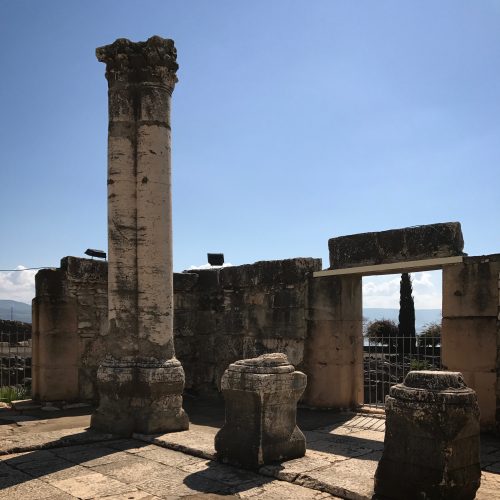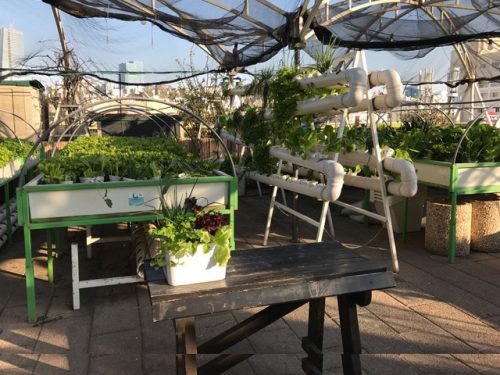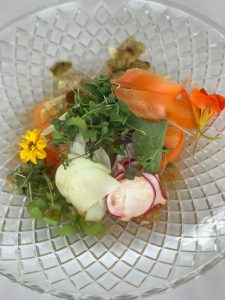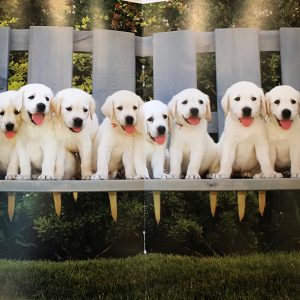One of the themes I find most interesting in Israel’s story is the Jewish response, historical and contemporary, to necessity and difficulty. And difficulties there have been. Religious and cultural conflict, the land squeeze, drought, security, international criticism, and psychological trauma are just a small tally. The issues raise their heads on all sides, one concern layered atop another, tel-like. Perhaps the tel, an artificial mound formed from the accumulated remains of people living on the same site for hundreds or thousands of years, is an apt image to describe what a traveler confronts when he travels this country, north to south, east to west, outside in and inside out. And so, as I planned my trip around this country of 8 million souls settled in a long, skinny landmass the size of New Jersey, I looked at the landscape of issues and then chose to build an itinerary that would include those locations where people are trying to address Israel’s concerns and make a difference in their country. They are entrepreneurs, storytellers, engineers, professionals, volunteers and, as we saw on the Gaza Strip, regular Israeli citizens attempting to live a normal life with a sense of humor not devoid of empathy.
The Land Squeeze
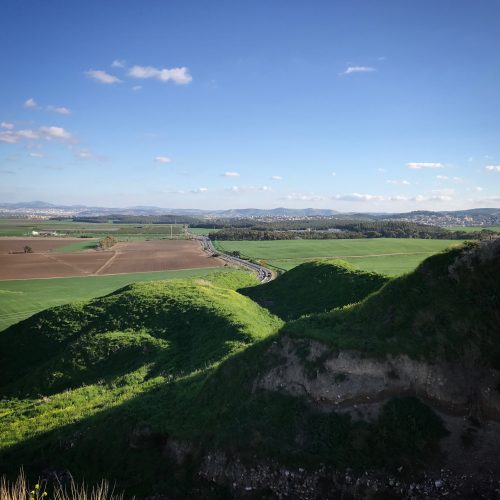
Looking north from the ancient city of Armageddon, you see the Palestinian held West Bank and, further away, the Jordanian mountains. This visual proof that Israel’s neighbors, friendly or not, are within reach at all times, is visceral when you visit the country. At its “waist”, the distance from Israel’s eastern border to the Mediterranean sea is only 9 miles. The politics in this land are beyond complicated and, in conversation after conversation, I would come away veering from one vision of the future to another and, on some days, seeing none at all.
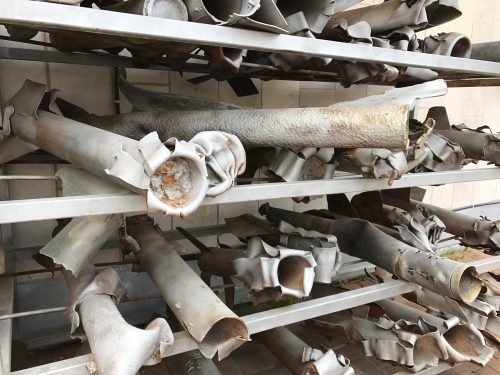
mortars collected along the Gaza Strip where an Israeli has exactly 15 seconds to find shelter when a mortar is launched.
Drought and Food
When the Jews arrived in what would become the Jewish State, there was not a tree to be had. Every tree that one sees in the country today has been planted, and a remarkable landscape has emerged. Forests, fruit groves, olive trees, vineyards, agricultural fields stretch across the country, even in the Negev Desert in the south. Today, tree planting continues and the country continues to transform itself. There are issues with water and produce however. I am told that the majority of fresh produce is exported abroad and that, in turn, produce is imported. The reasons are complicated (what isn’t here) and have to do with agricultural regulations in Europe and in Israel. Suffice it to say that the twin problems of adequate production and sufficient water – for agriculture as well as for household and other use – are pressing.
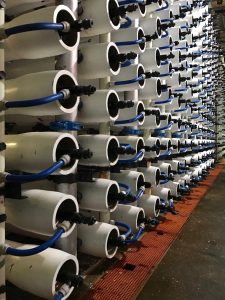
Israel needs 800,000 cubic meters of potable household water and they get it from their 5 desalination plants which operate on the reverse osmosis process. Agriculture uses grey water.
Israeli cuisine has finally come in to its own. Israel is often pictured as being at the center of the world, a strategic slip of land between Asia, Europe and Africa while being firmly rooted in the Middle East. As a crossroads of peoples and cultures, Israeli cuisine is a mixture of Arab, Mediterranean, Northern and Southern European tastes. And, like all crossroads – think Singapore for example – the food is richly textured and layered, complex, familiar, reminiscent. In short, it is delicious.
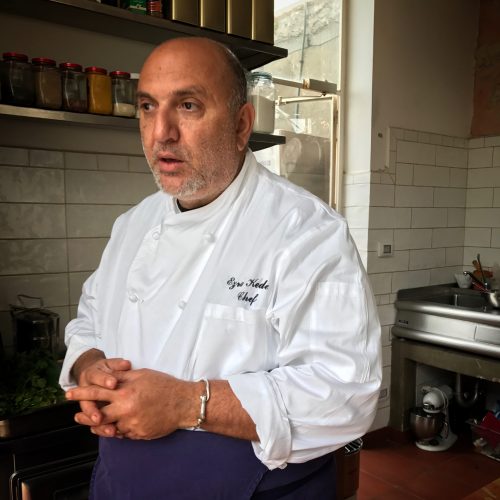
Chef Ezra Kedem lives in Jerusalem where he used to have a restaurant called Acadia. Today, he travels and cooks internationally as well as preparing delicious meals for private clients at home. He also grows organic vegetables and herbs, teaches children how to cook, and is currently researching the roots of Israeli cuisine. Family on his mother’s side trace their background to Iraq.
Security and Trauma
This is another complicated subject. Every youngster in Israel, with the exception of those from the Ultra Orthodox community, must do their military service. After military service you remain in the reserves until you are 45 and, unlike many reservists, they form the bulk of the army and are called up far too frequently. Wars, skirmishes and terrorism is never far from reality here and there is, I am told, a good amount of psychological trauma not just in returning soldiers but in those citizens who live close to the borders. I visited the Israeli Guide Dog Center just south of Tel Aviv. Apart from the pleasure of seeing these beautiful pups, what was immediately interesting about the center is that it derives its existence almost exclusively from volunteers and donations, something I saw frequently in Israel. And I was very interested to hear that, while the blind are the primary recipients of the dogs, the center also trains pups for special needs individuals and those at the top of that list are individuals with PTSD.
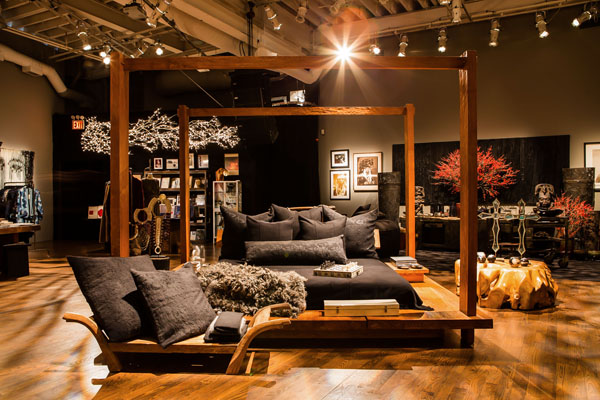 Since 2007, when fashion designer and philanthropist Donna Karan founded the Urban Zen Foundation, an inspiringly beautiful holiday market appears at 705 Greenwich Street in lower Manhattan. Each year, Karan creates a marketplace that combines humanitarianism with consumerism, promoting shopping with a purpose. The Foundation is dedicated to three initiatives: preservation of culture (past); bringing mind, body and spirit to healthcare (present); education (future.) The opening last night featured more than 40 artisans from countries as diverse as Colombia, Kyrgyzstan, India, South Africa and Mexico, artisans that exhibit at the International Folk Art Market in the Southwest each summer. The space is the perfect venue in which to display fabrics and objects, photographs and fashion in such a way that they - and you - feel instantly at home.
Of particular beauty were the feather light shrugs, coats and jackets of Farzana Sharshenbieva from Kyrgyzstan; the magnificently, finely tie dyed bandhani silk scarves of Gujarati Abduljabbar Khatri; the sensuous Zulu pots of Jabulile Nala whose mother is considered a national treasure. I adored the heavy, indigo dyed raw cotton jackets of Laotian Boukhong Signavong that greet you as you enter this magical space.
There is nothing more healing, nothing more inspiring, nothing more warming than to be in the presence of passionate artisans who draw beauty from their souls to share it with others. It was hard to leave Urban Zen last night, so hard, in fact, that I shall return tomorrow."
["post_title"]=>
string(42) "Urban Zen Promotes Shopping With A Purpose"
["post_excerpt"]=>
string(0) ""
["post_status"]=>
string(7) "publish"
["comment_status"]=>
string(4) "open"
["ping_status"]=>
string(4) "open"
["post_password"]=>
string(0) ""
["post_name"]=>
string(42) "urban-zen-promotes-shopping-with-a-purpose"
["to_ping"]=>
string(0) ""
["pinged"]=>
string(0) ""
["post_modified"]=>
string(19) "2018-12-07 17:03:53"
["post_modified_gmt"]=>
string(19) "2018-12-07 22:03:53"
["post_content_filtered"]=>
string(0) ""
["post_parent"]=>
int(0)
["guid"]=>
string(31) "http://lisalindblad.com/?p=8769"
["menu_order"]=>
int(0)
["post_type"]=>
string(4) "post"
["post_mime_type"]=>
string(0) ""
["comment_count"]=>
string(1) "0"
["filter"]=>
string(3) "raw"
}
}
Since 2007, when fashion designer and philanthropist Donna Karan founded the Urban Zen Foundation, an inspiringly beautiful holiday market appears at 705 Greenwich Street in lower Manhattan. Each year, Karan creates a marketplace that combines humanitarianism with consumerism, promoting shopping with a purpose. The Foundation is dedicated to three initiatives: preservation of culture (past); bringing mind, body and spirit to healthcare (present); education (future.) The opening last night featured more than 40 artisans from countries as diverse as Colombia, Kyrgyzstan, India, South Africa and Mexico, artisans that exhibit at the International Folk Art Market in the Southwest each summer. The space is the perfect venue in which to display fabrics and objects, photographs and fashion in such a way that they - and you - feel instantly at home.
Of particular beauty were the feather light shrugs, coats and jackets of Farzana Sharshenbieva from Kyrgyzstan; the magnificently, finely tie dyed bandhani silk scarves of Gujarati Abduljabbar Khatri; the sensuous Zulu pots of Jabulile Nala whose mother is considered a national treasure. I adored the heavy, indigo dyed raw cotton jackets of Laotian Boukhong Signavong that greet you as you enter this magical space.
There is nothing more healing, nothing more inspiring, nothing more warming than to be in the presence of passionate artisans who draw beauty from their souls to share it with others. It was hard to leave Urban Zen last night, so hard, in fact, that I shall return tomorrow."
["post_title"]=>
string(42) "Urban Zen Promotes Shopping With A Purpose"
["post_excerpt"]=>
string(0) ""
["post_status"]=>
string(7) "publish"
["comment_status"]=>
string(4) "open"
["ping_status"]=>
string(4) "open"
["post_password"]=>
string(0) ""
["post_name"]=>
string(42) "urban-zen-promotes-shopping-with-a-purpose"
["to_ping"]=>
string(0) ""
["pinged"]=>
string(0) ""
["post_modified"]=>
string(19) "2018-12-07 17:03:53"
["post_modified_gmt"]=>
string(19) "2018-12-07 22:03:53"
["post_content_filtered"]=>
string(0) ""
["post_parent"]=>
int(0)
["guid"]=>
string(31) "http://lisalindblad.com/?p=8769"
["menu_order"]=>
int(0)
["post_type"]=>
string(4) "post"
["post_mime_type"]=>
string(0) ""
["comment_count"]=>
string(1) "0"
["filter"]=>
string(3) "raw"
}
}
